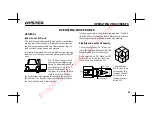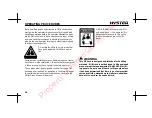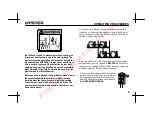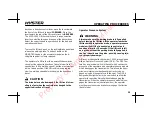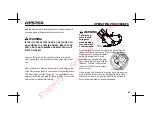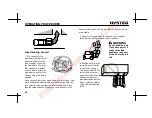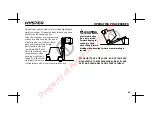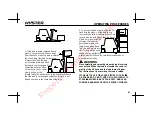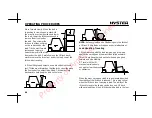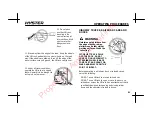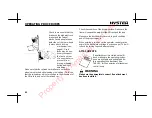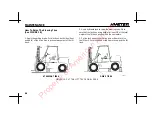
OPERATING PROCEDURES
43
If the weight of the load is not centered between the forks,
the load can fall from the forks when you turn a corner or
hit a bump. An off--center load will increase the possibility
of the truck tipping over to the side.
Make sure the pins that keep the forks in position are en-
gaged so that the forks cannot move.
4. For carriages or attachments that can be sideshifted,
the load should be centered on the centerline of the lift
truck before the load is transported. Capacities listed un-
der “Centered” on the Nameplate apply when transporting
loads that are centered on the centerline of the lift truck.
Capacities listed under “Sideshifted” on the Nameplate
apply if loads are transported that are not centered on the
centerline of the lift truck.
5. Check the condition of the driving surface. Make sure
the floor will support the weight of the lift truck and the
load.
Load Handling, Lifting, Lowering, And Tilting
The
LIFT
and
TILT
functions are con-
trolled by separate levers. See the
In-
struments and Controls
section for
the correct operation.
The speed of the hydraulic functions is con-
trolled by the position of the control levers and
the speed of the engine. The farther the hand
lever is moved from the
NEUTRAL
position, the
faster the speed of the hydraulic function.
Do not lift or hit anything that can fall on the operator or a
bystander. Remember, a lift truck equipped with a HYS-
TER overhead guard and load backrest extension pro-
vides reasonable protection to the operator from falling
objects, but can not protect against every possible impact.
Property of American Airlines

